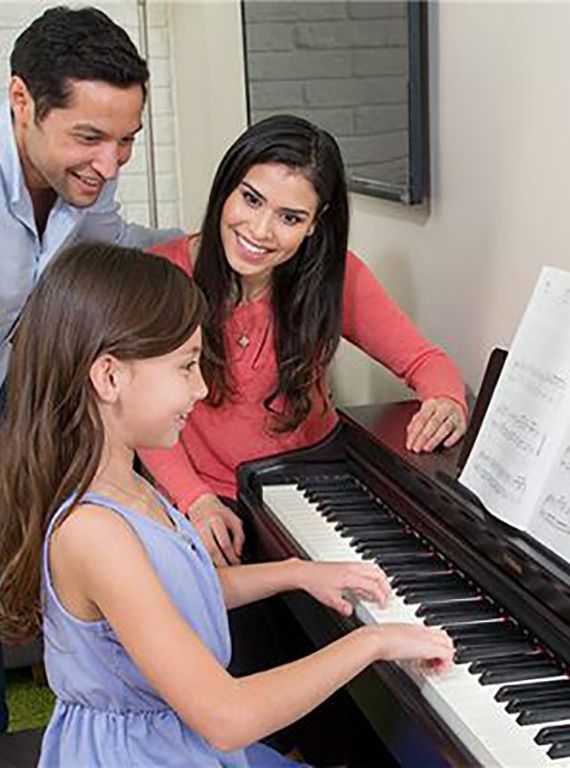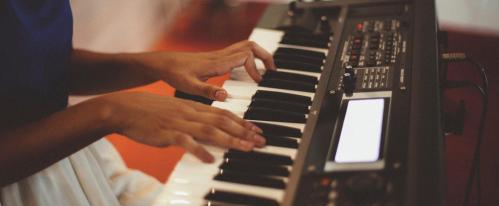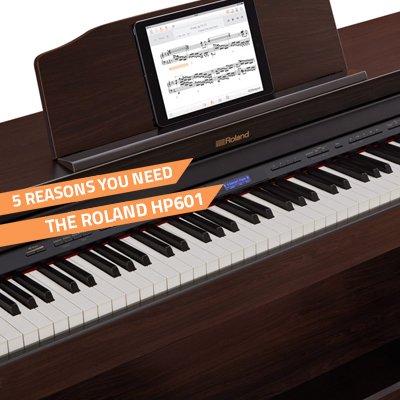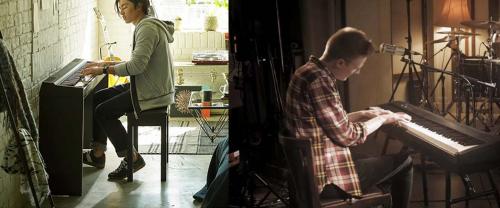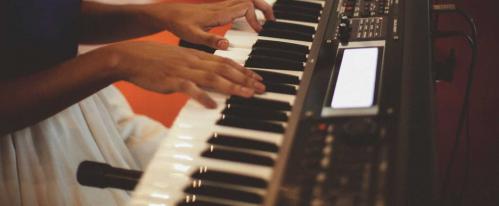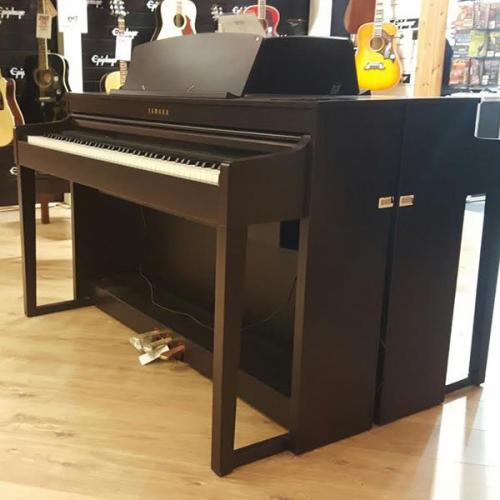WE PIT THE ROLAND RP-102 VS YAMAHA YDP-143 ARIUS TO SEE WHICH MID-RANGE PIANO MIGHT BE BEST SUITED TO YOUR NEEDS AND OFFER A COMPARISON BETWEEN THE TWO HEAVYWEIGHTS IN THE DIGITAL PIANO WORLD
From the sheer number of 88 key digital pianos available under the £800, two options in particular shine above the rest; the Roland RP102 and the Yamaha YDP-143 Arius.
So, in this blog we thought we’d provide a comparison between the Roland RP-102 vs Yamaha YDP-143 88 key digital pianos to help you decide which option might be better for your setup.
Both pianos are ideal as first pianos for your home and are specifically designed to help you to either learn at your own pace, provide a budget friendly option for existing players, complete beginners or even people who used to play and want to take it back up again.
But before, we start comparing the two in our Roland RP-102 vs Yamaha YDP-143 blog, you’ll need to know some of the key features of each so you know which option is right for you, and rather than rehash all the features of each, we’ve picked out a few main highlights that we think really set these apart.
TELL ME ABOUT THE ROLAND RP-102 DIGITAL PIANO
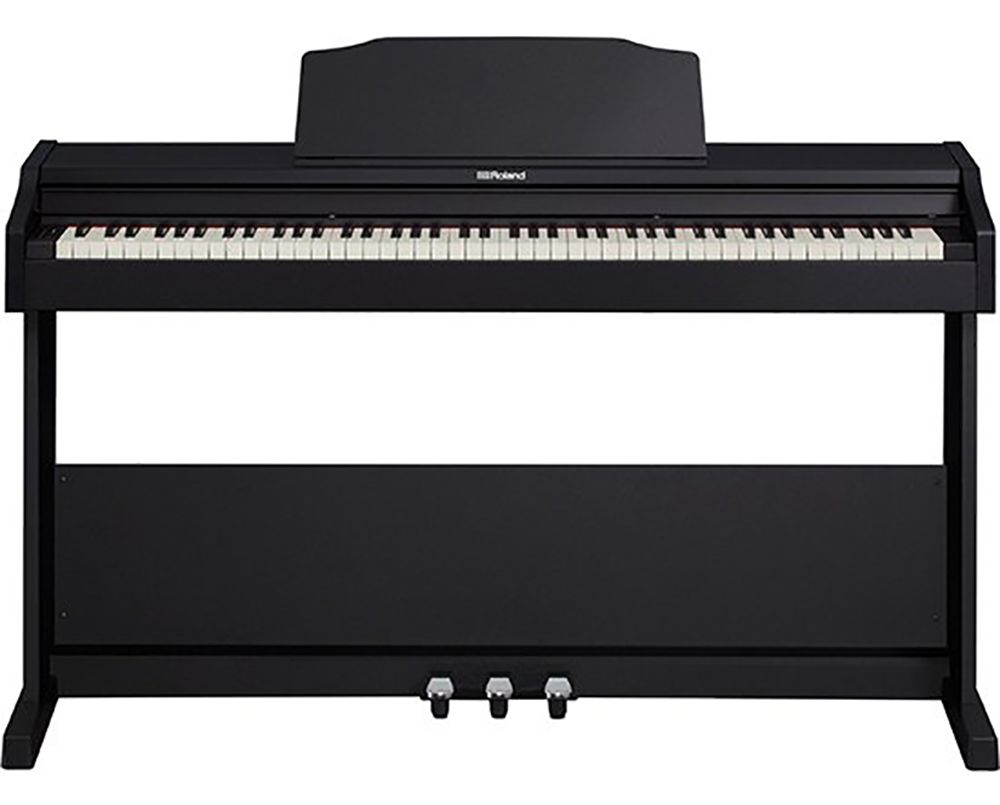
The Roland RP-102 Digital Piano is under £700, has been designed for beginners, pairs with the Roland Piano Partner 2 app and includes professional level hammer action and SuperNATURAL sound – let’s take a closer look at the Roland RP-102…
SOUNDS, FEEL & ACTION?
Whereas some digital pianos might use conventional samples the Roland RP102 Digital Piano utilises the coveted SuperNATURAL technology that is usually reserved for Roland’s higher-tier, premium pianos.
So straight of the box, you have access to 4 beautifully sampled piano tones as well as a whole host of other tones such as electric piano, organs strings and more, so you’re covered for a wide variety of different genres.
You can even mix a variety of sounds to make it sound like there’s a whole orchestra accompanying your piano playing, too! Take a quick listen below.
The Roland RP-102 digital piano has been constructed using a PHA-4 standard keyboard, which features progressive hammer action and Ivory Feel texture to encourage a realistic and accurate playing experience, whilst the advanced sensing technology captures all the subtle nuances of your playing.
This technology has also been extended to the pedals as they also support half-pedal control for greater dynamics.
BUILT-IN LEARNING FEATURES?
Although this could easily fit into any mid-to-pro level set up thanks to its fantastic playability, the RP-102 has been designed to encourage new players to really enjoy the learning experience.
With that in mind, the team at Roland have included a range of different learner-based features such as 200 ready-to-play songs ranging from classical masterpieces by Mozart and Beethoven to famous piano etudes from Hanon and Czerny and more.
The Twin piano mode splits the keyboard into two 44 note pianos each with their own middle C, which makes it easier to jam along with a teacher or a partner.
And speaking of partners…
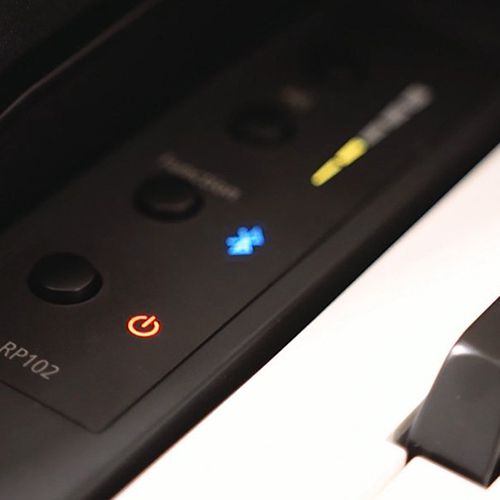
COMPATIBLE WITH APPS?
Roland understand that learning a new instrument or even polishing up on your skills can sometimes be difficult, which is why they developed the free Piano Partner 2 app for iOS and Android mobile devices, which not only makes the learning experience fun, but actually WILL help you learn piano!
The app features access to backing rhythms and flash card games that help you build your skills and engaging music exercises that you’ll actually like playing.
The app connects via Bluetooth too, so you’re not having to worry about wires and you can choose from a variety of piano and non-piano sounds via your tablet or smartphone.
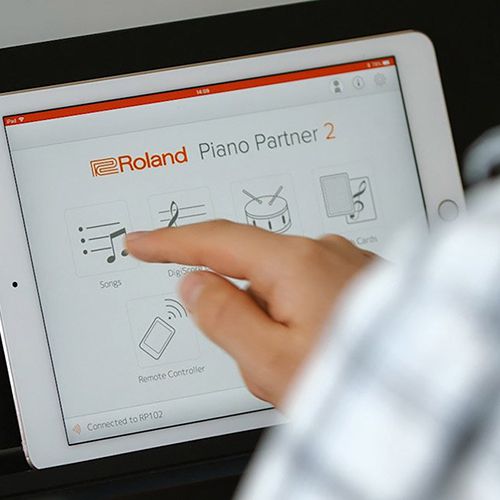
SPACE SAVING FEATURES?
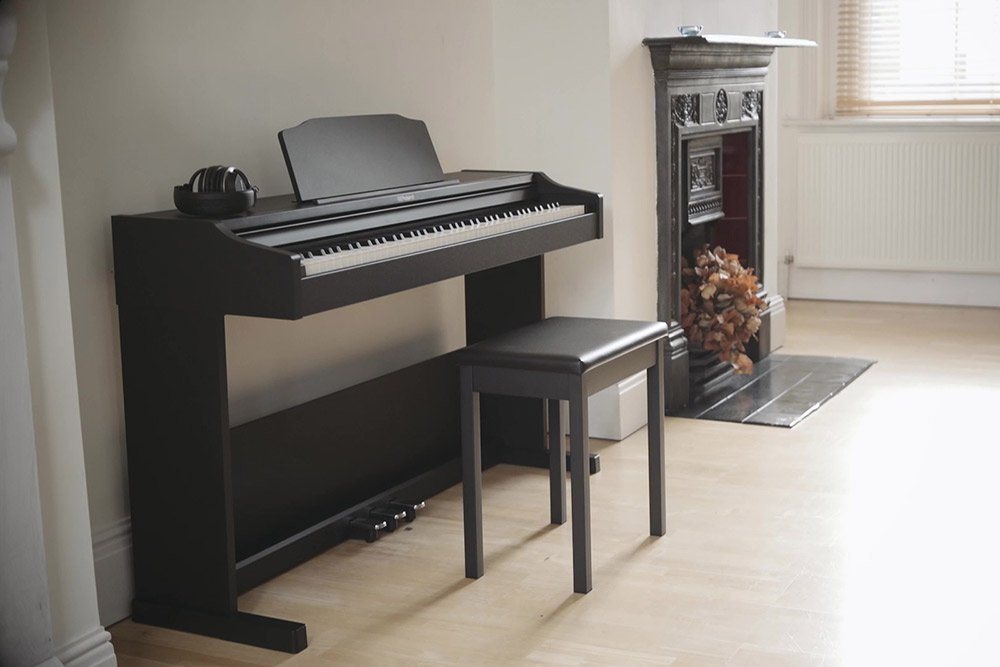
The Roland RP102 Digital Piano comes in at under £700, so it’s still rather affordable, and isn’t too drastic an investment should you decide that you want to learn piano or even add something to your home.
Fortunately, this has been designed with space-saving features and great care has gone into making it a sleek addition to any room, so it can become a great focal point within the home.
At just over 38kgs (including stand), it’s not super awkward to move around either.
Dimensions: 1379mm (W) x 413 mm (D) x 817 mm (H).
TELL ME ABOUT THE YAMAHA YDP-143 ARIUS DIGITAL PIANO
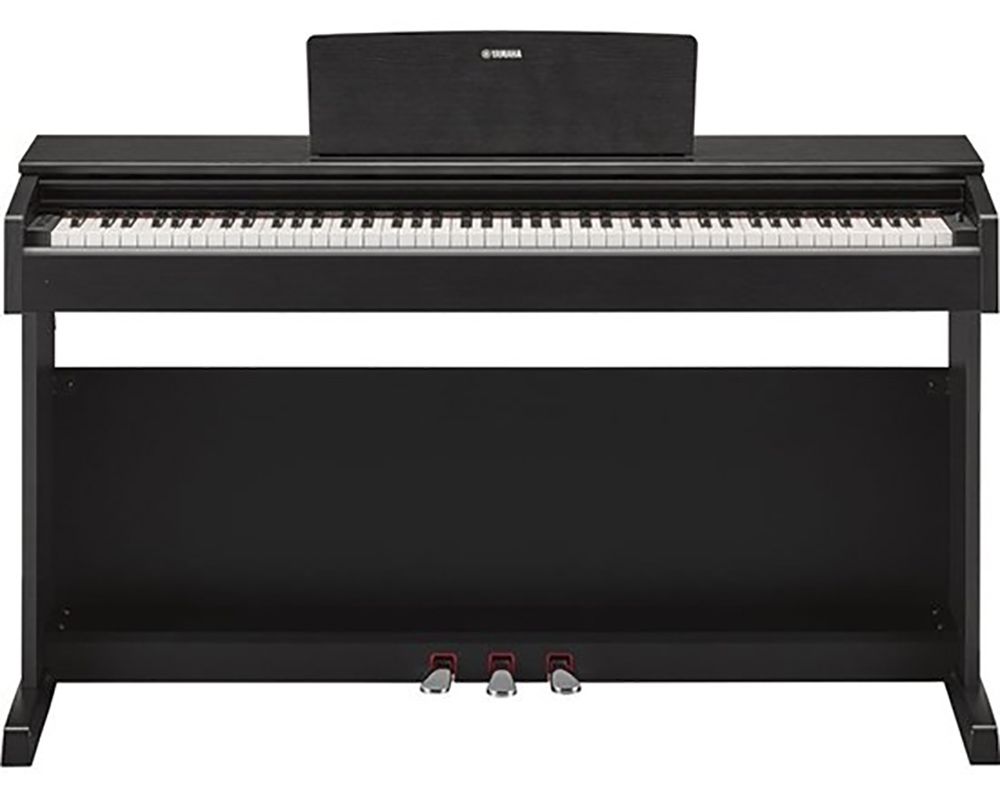
The Yamaha Arius YDP-143 is under £800, features 10 high quality sounds thanks to the Pure CF Sound Engine, comes with a built in 2 track recorder and features Graded Hammer Standard action keys. Let’s see what it has to offer.
SOUNDS, FEEL & ACTION?
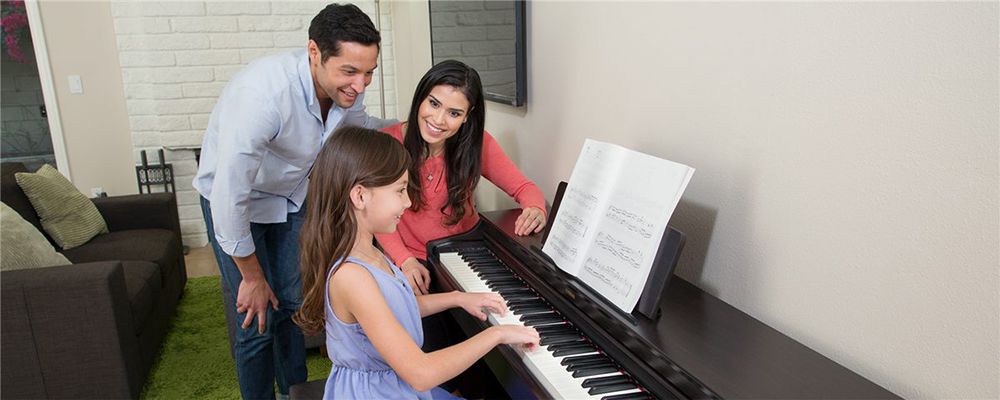
The Yamaha YDP-143 Arius Digital Piano utilises the renowned Pure CF Sound Engine and comes with 10 high quality sounds to choose from, all of which have been professionally sampled to produce a lush realism.
This means you get the sound of the Yamaha CFIIIS 9' concert grand piano within, beautifully captured to ensure the dynamics and expression of the original piano are preserved.
The Graded Hammer Standard action ensures a realistic feel across the entire 88 keys whilst the Acoustic Optimizer technology within controls the resonance and warmth of your sound, providing expressive characteristics that some digital pianos struggle to get right.
BUILT-IN LEARNING FEATURES?
The Yamaha YDP-143 Arius doesn’t have as many features for learners built-in as the Roland RP-102, but it certainly has a few features that the experienced piano player will certainly enjoy.
The YDP-143 comes pre-loaded with a large variety of built-in songs that you can play along to. You have 60 recognisable piano songs designed to encourage learning, perfectly paired with the accompanying book, "50 Greats for the Piano" by Yamaha.
There’s a 2 track recording function built-in designed for recording your performances, activated with a single touch. They are recorded to Standard MIDI file (SMF) format so you can use your recordings with any compatible gear.
You can overdub or record each hand separately on 2 tracks. A headphone out comes with Stereophonic Optimizer technology for surround sound quality – ideal for silent practice.
COMPATIBLE WITH APPS?
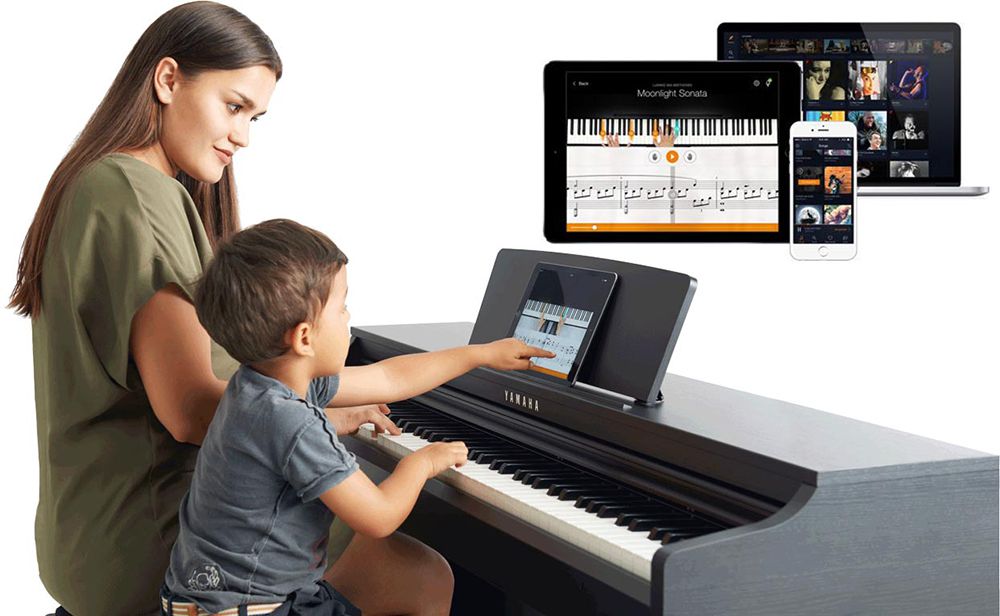
You can connect the Yamaha YDP-143 to your computer or mobile device via USB or utilise the Yamaha UD-BT01, or the Lightning-USB Camera Adaptor (both sold separately) to connect to your iOS device.
There’s a large number of apps out there from Yamaha designed to work with your digital piano, including Digital Piano controller – free on the iOS app store. This allows you to take total control over your sounds and make adjustments to features within the piano instantly.
However, should you want to learn how to play the piano, you get three months premium access to Flowkey completely free of charge when you purchase a Yamaha digital piano or keyboard between 15th July 2016 and 31st March 2019.
Unfortunately, there are no free apps directly from Yamaha to help you learn, but 3 months of free premium access will help you on your way.
SPACE SAVING FEATURES?
The Yamaha YDP-143 is also 38kg and is almost exactly the same size as the RP-102 coming in at 1357mm (W) x 815mm (H) x 422mm (D), so it’s not going to take up too much room.
Yet again, the design of the YDP-143 focusses on sleek and smooth, and you have a choice of three beautifully designed colours to suit your home.
KEY DIFFERENCES BETWEEN THE ROLAND RP102 VS YAMAHA YDP-143
| Features | Yamaha Arius | Roland RP102 |
| Key Action | Gradually weighted in blocks (GH3) | Gradually weighted individually (PHA4) |
| Key Touch/Weight | 4 Types | 5 Types |
| Sound Engine | Sampled | SuperNATURAL (samples+modeling) |
| Voices | 10 | 15 (300+ when connected with app) |
| Effects | Reverb (4 levels) | Ambience (10 levels) and Brilliance (21) |
| Songs | 60 | 213 |
| Bluetooth | No | Yes |
So which one do you think wins in our Roland RP-102 vs Yamaha YDP-143 comparison? Let us know in the comments below!
Updated: 2020-07-03

